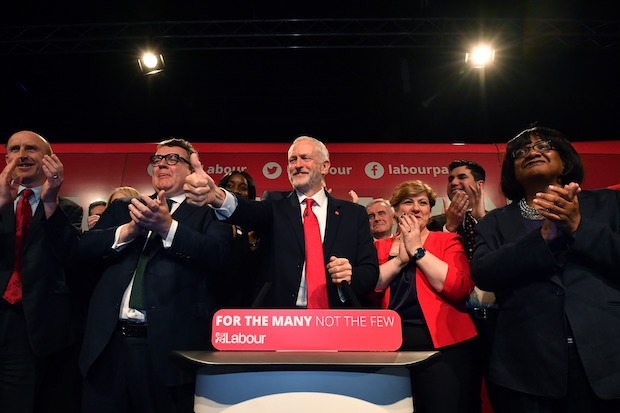Usually in a general election campaign, MPs in marginal seats invite high profile party figures to their constituencies in a bid to generate interest from the local media and win over swing voters. This is certainly what’s happening when it comes to the Tory campaign — from Theresa May downwards, Conservative ministers have been busy touring the country over the past few weeks.
For Labour, however, the goal posts are a bit different this election. MPs are faced with a quandary over whether or not to extend an invitation to the party’s high command. There are two reasons for this. Firstly, a visit reinforces the Conservative message that the prospect of a Labour government is real (and undermines some MPs’ claims that it is safe to vote for them personally as Corbyn won’t be Prime Minister come June 9).
Secondly, the majority of politicians who make up Labour’s shadow cabinet are not so much the party’s best and brightest, as those who were on the ‘subs bench’ and shuffled onto the pitch when other players declined. The varying quality of Labour’s front bench can be witnessed in the string of disastrous policy interviews that have been given by the likes of Diane Abbott and Rebecca Long-Bailey in recent weeks.
Given the division some of these figures cause among voters, it’s understandable that a number of MPs who are fighting off a threat from the Tories don’t think they will be best served by a visit from Richard Burgon. As with anything, there are a few exceptions. In general, the more popular (and often more moderate) shadow cabinet members — like Andrew Gwynne, Jonathan Ashworth, Ian Lavery, Keir Starmer, and Angela Rayner — have been getting out and about more.
If candidates are cautious over a shadow cabinet appearance, a visit from the party leader is a whole other ball game. On the doorstep, canvassers complain that it is Jeremy Corbyn who is most frequently cited as a reason they are considering not voting Labour — with his views on defence proving a particular bugbear. If you look at the seats Corbyn has deemed worth visiting, it seems he has taken this on board — spending a decent chunk of his time visiting Labour safe seats. Last Tuesday, he managed to visit three constituencies around greater Manchester with majorities over 10,000.
While the two sides of the party don’t appear on the surface to be working in harmony, it may be that this topsy-turvy way of doing things actually makes the best of a bad situation.







Comments